Description
Approximately the size of a standard “351” style pick. Excellent weight and balance.
The 1st Special Service Force (also called The Devil’s Brigade, The Black Devils, The Black Devils’ Brigade, and Freddie’s Freighters), was an elite American-Canadian commando unit in World War II, under command of the United States Fifth Army. The unit was organized in 1942 and trained at Fort William Henry Harrison near Helena, Montana in the United States. The Force served in the Aleutian Islands, and fought in Italy, and southern France before being disbanded in December 1944.
The modern American and Canadian special operations forces trace their heritage to this unit. In 2013, the United States Congress passed a bill to award the 1st Special Service Force the Congressional Gold Medal.
Geoffrey Pyke was an English journalist, educationalist, and later an inventor whose clever, but unorthodox, ideas could be difficult to implement. In lifestyle and appearance, he fitted the common stereotype of a scientist-engineer-inventor or in British slang, a “boffin”. This was part of the British approach in World War II of encouraging innovative warfare methods and weapons that was personally backed by Churchill. Hobart’s Funnies are another example. Pyke, working for the British Combined Operations Command, envisioned the creation of a small, élite military force capable of fighting behind enemy lines in winter conditions. This would have been a commando unit that could be landed, by sea or air, into occupied Norway, Romania, and the Italian Alps on sabotage missions against hydroelectricplants and oil fields. In Norway, the chief industrial threat was the creation of the heavy water used in the German atomic weapon research at Rjukan. Furthermore, attacks on Norwegian power stations, which supplied the country with 49% of its power, might drive the Axis powers out of the country and give the Allies a direct link to Russia.[4] In Romania, there were the strategically important Ploiești oil fields that met one quarter of the Germans’ consumption, and Italian hydroelectric plants powered most of south German industry. Pyke requested that a tracked vehicle be developed especially for the unit, capable of carrying men and their equipment at high speed across snow-covered terrain.
In March 1942 Pyke proposed an idea, which he had named Project Plough, to Lord Louis Mountbatten, Chief of Combined Operations Headquarters (COHQ) that Allied commandos be parachuted into the Norwegian mountains to establish a base on the Jostedalsbreen, a large glacier plateau, for guerrilla actions against the German army of occupation. These troops would be equipped with Pyke’s proposed snow vehicle. Pyke persuaded Mountbatten that such a force would be invulnerable in its glacier strongholds and would tie down large numbers of German troops trying to dislodge it.
However, given the demands upon both Combined Operations and British industry, it was decided to offer it instead to the United States at the Chequers Conference of March 1942. General George Marshall, Chief of Staff of the United States Army, accepted the suggestion for Project Plough. In April 1942, since no suitable vehicle existed, the U.S. government asked automobile manufacturers to look into such a design. Studebaker subsequently created the T-15 cargo carrier, which later became the M29 Weasel.
In May 1942, the concept papers for Plough were scrutinized by Lieutenant Colonel Robert T. Frederick, a young officer in the Operations Division of the U.S. General Staff. Frederick predicted Plough would be a military fiasco on the following grounds. Firstly, he argued that Plough endeavored to achieve unrealistic objectives with the number of troops that the plan called for. Similarly, he argued that the small, elite division would be outnumbered and overtaken in any defensive attempts to hold an area once it was captured. Furthermore, Frederick concluded that there was no concrete way to evacuate the troops after a mission. Finally, the plan had called for troops to be dropped by airplane to their targets, which Frederick said was impossible at the moment, as there were no planes to fly the men into Norway. Ultimately, he concluded that a small squad of elite men would not do enough damage to justify the risk of putting them into battle and instead proposed a series of strategic bombings to achieve the plan’s objectives.
Plough went ahead as proposed. General Marshall and General Eisenhower had already agreed to the operation with the British High Command and were unwilling to compromise a chance to open an American front in Europe. It was believed that Plough offered the possibility of defeating the Germans, and the Americans wanted allied efforts to shift to the Pacific Theater. The sooner the Germans were defeated, it was argued, the sooner this would become a reality.
The first officer picked to lead the unit, Lieutenant Colonel Howard R. Johnson, was kicked off the project for not getting along with Pyke and arguing with Mountbatten and Eisenhower about the feasibility of the plan. His replacement was suggested by Mountbatten and assigned by Eisenhower: LTC Frederick himself. He was given the task of creating a fighting unit for Project Plough and was promoted to colonel to command it. By July 1942 Frederick had eased Pyke out of the picture. Johnson went on to form and command the 501st Parachute Infantry Regiment.
Colonel Frederick enjoyed a very high priority in obtaining equipment and training areas. Originally, due to its winter warfare mission, it had been intended that the unit should be equally made up of American, Canadian, and Norwegian troops. However, a lack of suitable Norwegians saw this changed to half American and half Canadian.
In July 1942, the Canadian Minister of National Defence, James Ralston, approved the assignment of 697 officers and enlisted men for the project under the initial disguise that they were forming the 1st Canadian Parachute Battalion (1CPB). Shortly after, due to the decision to raise a parachute school in Canada under the 1CPB designation, the Canadian volunteers served under the unofficial designation of 2nd Canadian Parachute Battalion. This was in name only; the 2CPB did not legally exist. (The Canadians would not be legally made into a unit of the Canadian Army until April–May 1943 under the official designation, 1st Canadian Special Service Battalion.) They would be paid by the Canadian government but be supplied with uniforms, equipment, food, shelter and travel expenses by the U.S., but nevertheless remained subject to their own army’s code of discipline. It was agreed that a Canadian would serve as second in command of the force and that half of the officers and one third of the enlisted men would be Canadian. However, after Lieutenant Colonel McQueen (the Canadian serving as second in command) broke his leg during parachute training, the highest ranking Canadian in the force was Lieutenant Colonel Don Williamson who commanded the 2nd Regiment. The U.S. volunteers for the force consisted initially of officers from Forts Belvoir and Benning. Letters of recruitment were posted to all army units in the Southwest and on the Pacific coast. The letters called for single men, aged 21–35 with three or more years of grammar school. Occupations preferred: Rangers, lumberjacks, northwoodsmen, hunters, prospectors, explorers and game wardens. Inspection teams also scoured the western camps for ideal candidates. Those chosen, owing to the secrecy of the mission, were often told that they had been selected to undergo training for a parachute unit. Indeed, the unit was so secretive, that many soldiers did not know where they were when they arrived in Helena for training, as the windows of the trains carrying the troops were painted black.
The combat force was to be made up of three regiments. Each regiment was led by a lieutenant colonel and thirty-two officers and boasted a force of 385 men. The regiments were divided into two battalions with three companies in each battalion and three platoons in each company. The platoon was then broken up into two sections.
Frederick was greatly admired by the soldiers in the First Special Service Force for his willingness to fight alongside the men in battle. On the beachhead in Anzio, for example, a nighttime Force patrol walked into a German minefield and was pinned down by machine gun fire. Colonel Frederick ran into battle and assisted the litter bearers in clearing the wounded Force members.
Training and equipment[edit]
Since the unit needed to be trained quickly, the soldiers began parachuting within 48 hours of their arrival in Helena, Montana. The camp had no training towers and preliminary flights were not carried out, so for many this was their first experience at jumping. This training was completed before any other because it was believed that if all the soldiers earned their jumping badges simultaneously a sense of camaraderie would develop within the camp.
The men were on a strict and physically demanding three phase training schedule: 1) From August to October: parachuting, weapons and demolitions usage, small unit tactics and physical training. 2) From October to November: unit tactics and problem solving. 3) From November to July: skiing, rock climbing, adaptation to cold climates and operation of the M29 Weasel.
The weekly training schedule comprised reveille at 04:30 from Monday to Saturday followed by breakfast at 06:30. The obstacle course was run by 08:00 four times a week followed by the day’s training, which differed depending on the month. Soldiers were expected to march double time between training exercises in order to adhere to the strict schedule. Training lectures were given by veterans of overseas wars in the evenings from Monday to Friday. Soldiers were given Saturday evenings and Sundays off. Most of the men went into Helena to relax on their days off.
Marches were done on a 60-mile (97 km) course, the record for which was held by Colonel Marshall’s First Regiment, who completed it in twenty hours. The force trained with enemy weapons, taking them apart, reassembling and shooting them until they were as proficient with them as with their own.[15]
The hand-to-hand combat instructor was Dermot (Pat) O’Neill, an ex-Shanghai International Police Officer, who was an expert at unarmed combat. O’Neill, who was well-versed in several forms of martial arts, taught the men to attack the eyes, throat, groin and knees. He also taught knife fighting tactics and showed the men how to quick-draw their pistols. The men attacked one another with unsheathed bayonets as part of the training exercises and injuries were common.[16]
Ski training, taught by Norwegian instructors, began in December. The men received lectures and demonstrations on skiing techniques and most had mastered the basics in two weeks. At this point the men were made to ski cross-country in formation from dawn until dusk with all of their equipment until they were up to Norwegian army standards.
As a light infantry unit destined for alpine or winter combat it was issued various items of non-standard clothing, equipment and rations, including skis, parkas, haversacks and the Mountain ration. From the outset, the 1st Special Service Force was armed with a variety of non-standard or limited-issue weapons, such as the M1941 Johnson machine gun. The Johnson light machine gun in particular helped greatly increase the firepower of the unit and was highly regarded by those who used it in combat. Frederick’s staff even considered arming the men with blow darts but it was decided against on the grounds that it may have been considered a war crime. Frederick himself participated in the design of a fighting knife made exclusively for the force called the V-42 combat knife, a derivative of the Fairbairn-Sykes fighting knife.
While carrying out beachhead operations at Anzio, legend has it that a member of the force uncovered the journal of a German lieutenant from the Herman Goering Division. The journal contained the following entry: “The Black Devils are all around us every time we come into the line. We never hear them come.” This legend was never verified as fact by any member of the brigade; however, the force was known as the Black Devils and as the Devil’s Brigade. The members of the brigade preferred the latter. General Frederick had cards printed up with the unit’s insignia on them and the words Das dicke Ende kommt noch! or “The worst is yet to come” printed in red ink down the right side which the force would leave on the bodies of dead Germans as a form of psychological warfare. This was so effective that Sergeant Victor Kaisner reported hearing a German soldier whisper “Schwarzer Teufel” (“Black Devil”) as the German’s throat was being sliced on the beachhead. However, recent historiography surrounding the unit debates whether or not Frederick and his general staff made up the nickname in order to instill fear in the enemy.
The unit was unofficially first known as the “Braves”. Their spearhead shoulder insignia was chosen with this name in mind. The formation patch was a red spearhead with the words USA written horizontally and CANADA written vertically. The branch of service insignia was the crossed arrows formerly worn by the U.S. Army Indian Scouts. The unit wore red, white, and blue piping on their garrison cap and on the breast an oval (or trimming) behind their Parachutist Wings. Members of the unit also wore a red, white, and blue fourragère, lanyard, or shoulder cord made out of parachute shroud lines.
American members of the force arrived for training in Helena in standard US Army attire: green twill coveralls, some wearing khaki pants and fatigue hats. Others were dressed in trousers and green uniform jackets and wore green caps. Ultimately, however, the American uniforms did not differ widely from one another. The Canadian troops, however, arrived in all different manners of uniform: some wore kilts, others tartan trousers (trews) and others Bermuda shorts. Headgear differed just as widely, depending on where the soldier was from – wedge caps for some, black berets for troops taken from armoured regiments and large khaki Tam o’ Shanters for soldiers from Scottish regiments. Eventually, it was decided that the uniforms would come from an American supplier and olive drab trousers and blouses were issued. The only thing that differentiated an American Force member from a Canadian one was the identification disc, aka “dog tags,” worn by the soldier (Americans wore American metal ID tags and Canadians wore Canadian ID discs). Forcemen also wore a red, white and blue aiguillette. For mountain warfare, the men were given baggy ski pants, parkas and a helmet. Standard boots were originally the same as those issued to parachuting regiments, but these were substituted for infantry combat boots in Italy.
Colonel Frederick worried from the outset that the soldiers from both countries would have trouble forming a cohesive unit. On a base level, the techniques and commands used by either army were confusing to the other. Commands for marching, for example, had to be homogenized in order for the unit to operate in the field effectively. In order to satisfy the men from both countries, compromises were made. Canadian bagpipers were put into American unit marching bands to play “Reveille” every morning. The marching styles and commands of the American and Canadian armies were mixed and uniforms were made identical. In the end, Frederick’s fears were unfounded as the men bonded through training and dedication to the force.
The First Special Service Force was activated on 9 July 1942 as a joint Canadian-U.S. force of three small regiments and a service battalion. Fort William Henry Harrison in Helena, Montana was chosen as the primary training location, due to its flat terrain for airbornetraining and its close proximity to mountains for ski and winter training. Following its initial training period in Montana, the FSSF relocated to Camp Bradford, Virginia, on 15 April 1943, and to Fort Ethan Allen, Vermont, on 23 May 1943. On 4 July 1943, it arrived at the San Francisco Port of Embarkation. (Wikipedia)
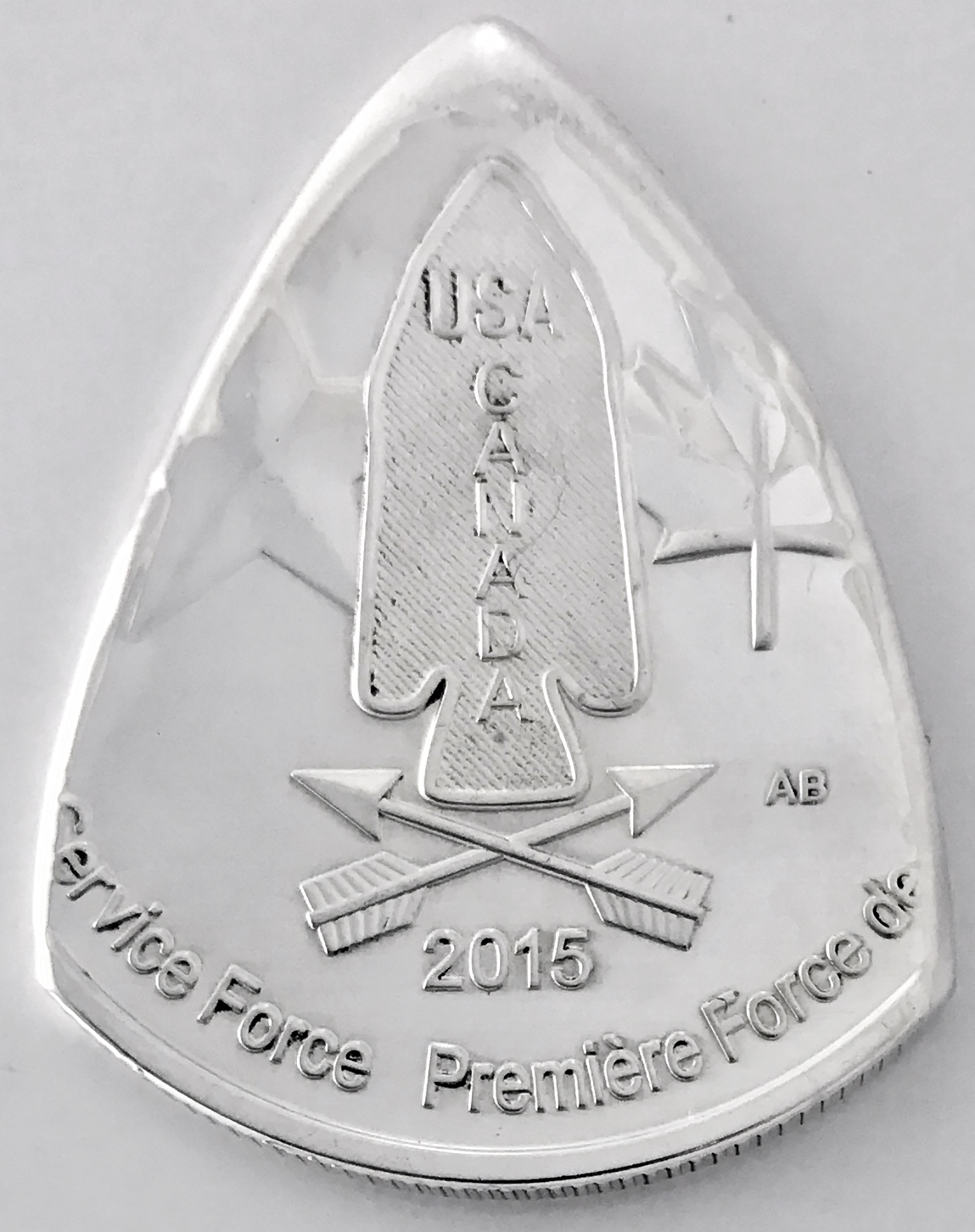
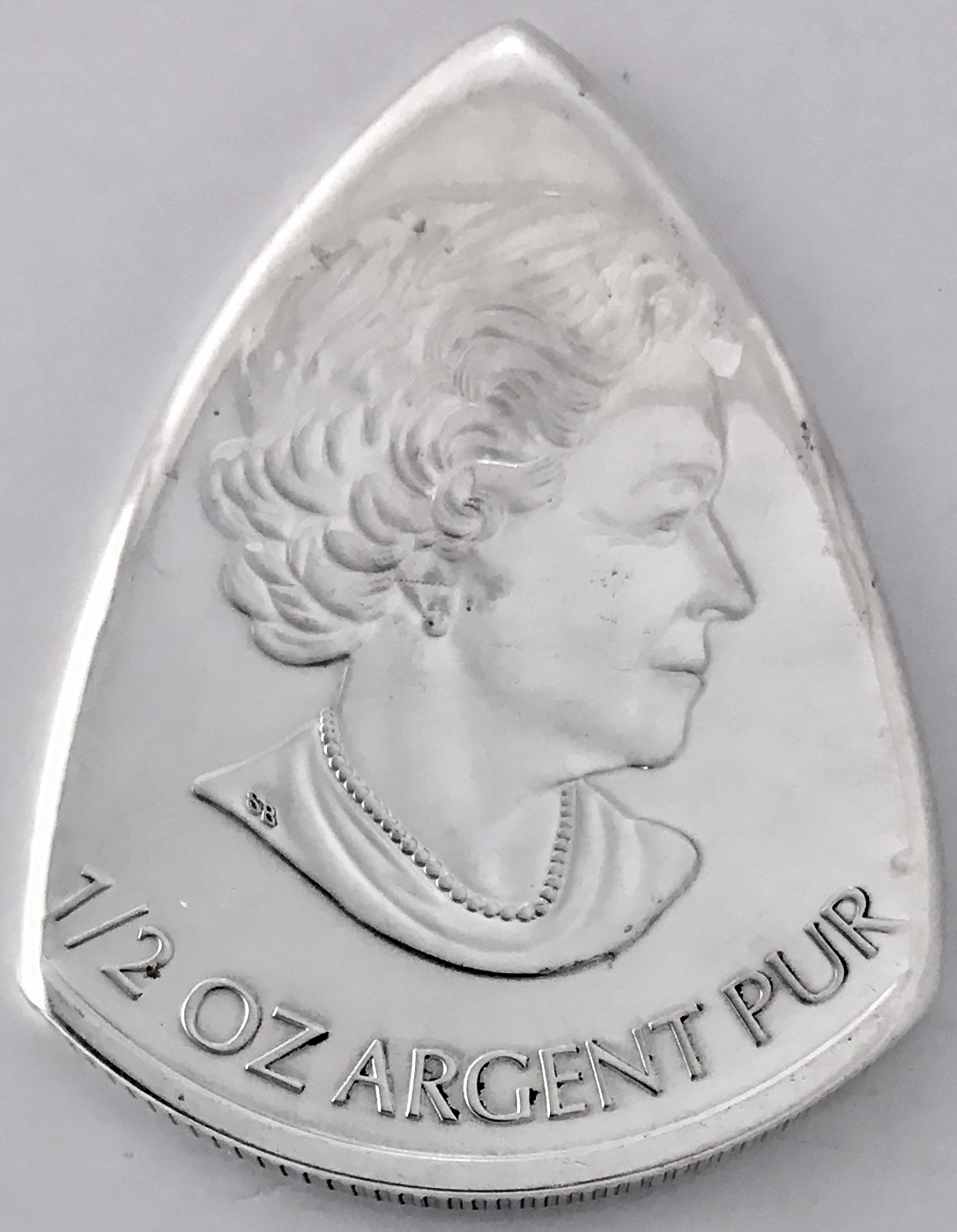
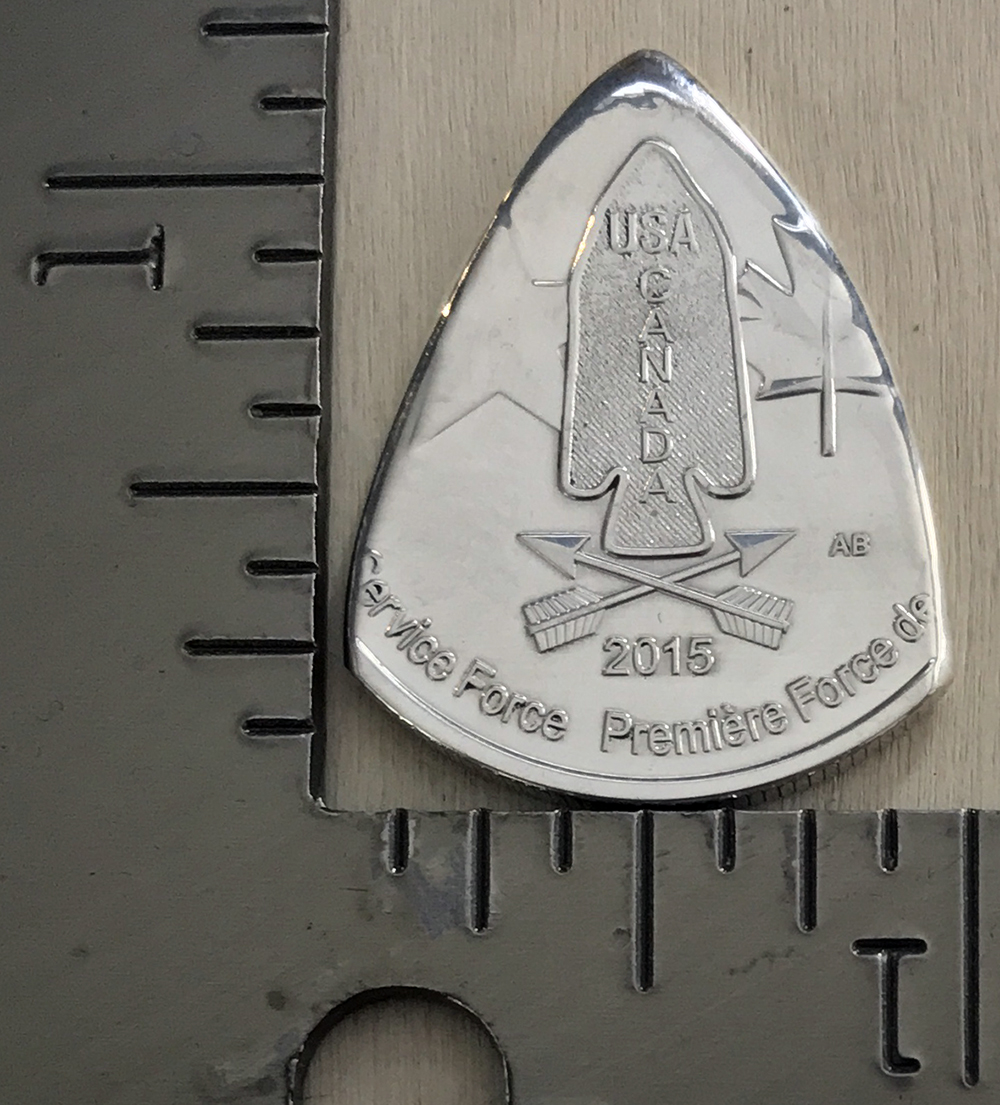
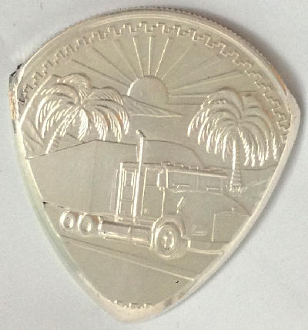


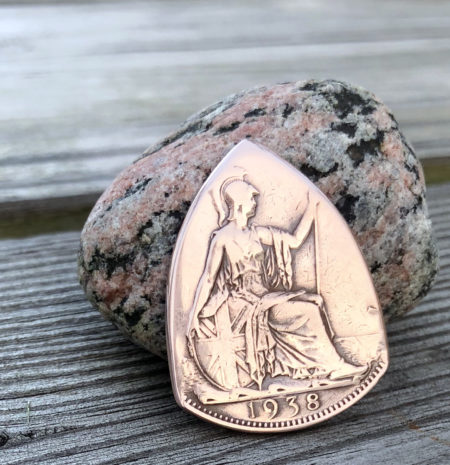
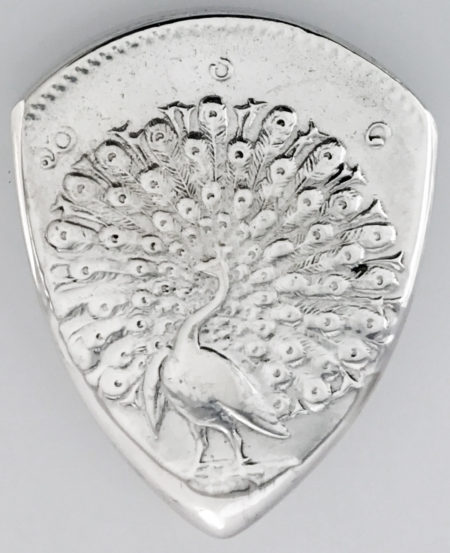
Reviews
There are no reviews yet.